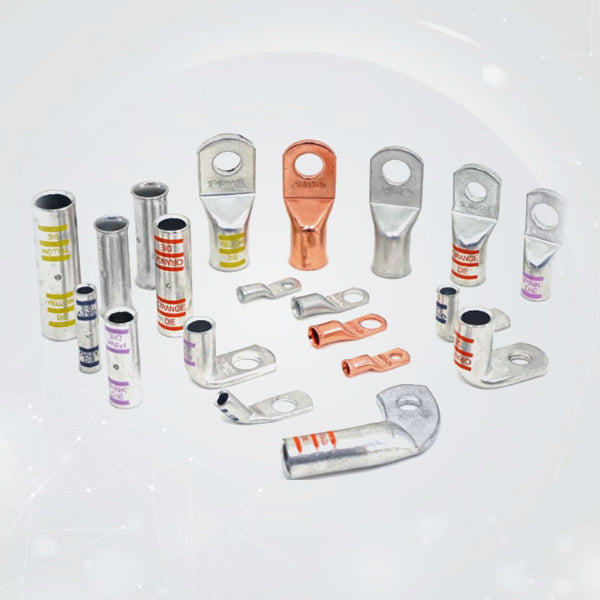
Using 2 AWG Lugs for Battery Connections
Reliable power delivery is crucial in high-demand electrical systems, and battery connections are at the heart of these systems. Whether it's for automotive, marine, or off-grid power, the choice of connectors significantly impacts performance and safety. 2 AWG lugs are specifically designed to handle moderate to high currents, making them an ideal choice for ensuring robust and efficient battery connections. Unlike smaller lugs that may falter under heavy loads, 2 awg lugs are engineered to minimize voltage drop and maintain consistent power flow. This article delves into the advantages of using 2 awg lugs for battery connections and provides essential guidelines for their proper installation and maintenance.
Why Choose 2 AWG Lugs for Battery Connections?
2 awg lugs are designed to manage substantial electrical currents, making them well-suited for battery systems that demand consistent and reliable power. Their ability to handle higher loads efficiently minimizes voltage drop, ensuring that connected equipment receives the necessary power without loss. This is particularly critical in applications where battery performance is paramount, such as in starting engines, powering marine electronics, or running off-grid appliances. The robust construction of 2 gauge lugs also contributes to their durability, enabling them to withstand the rigors of demanding environments.
Key Advantages of 2 AWG Lugs
- High Current Capacity: 2 awg lugs are built to handle significant electrical currents, typically in the range of 125 to 150A, depending on the specific application and cable insulation. This capacity ensures efficient power delivery from the battery, reducing the risk of overheating and power loss.
- Durability: Battery connections are often subjected to harsh conditions, including vibration, temperature fluctuations, and exposure to corrosive elements. 2 gauge battery cable lugs are constructed from durable materials that can withstand these challenges, providing a long-lasting and reliable connection.
- Safety: A secure and well-executed connection is vital for safety, especially in high-current systems. 2 awg lugs, when properly installed, minimize the risk of loose connections, which can lead to arcing, heat buildup, and potentially dangerous electrical fires.
- Compatibility: 2 awg lugs are versatile and compatible with a wide range of battery types and cable sizes. This adaptability makes them a popular choice across various industries and applications.
Proper Installation for Optimal Performance
To harness the full potential of 2 awg lugs, correct installation is essential. The following steps and considerations will help ensure a secure and efficient connection:
- Cable Preparation: Begin by carefully stripping the insulation from your battery cable. For 2 awg lugs, the recommended strip length is approximately 3/4" or 19–20 mm. Precision is important to ensure a proper fit within the lug barrel. When working with battery cables 2 gauge, it's crucial to inspect the cable for any signs of damage or wear before proceeding.
- Lug Selection: Select a 2 awg lug that precisely matches the diameter of your cable. This ensures maximum contact area and optimal current flow. Using the correct size lug is crucial for preventing connection failures and maintaining system efficiency.
- Crimping: Employ a calibrated crimper designed for 2 gauge awg lugs. Hydraulic or hammer crimpers are commonly used for this size, providing the necessary force for a solid compression. Proper crimping is essential for creating a gas-tight seal, which prevents corrosion and ensures a low-resistance connection.
- Post-Crimping Inspection: After crimping, meticulously inspect the connection to ensure it is secure. The lug should be uniformly compressed around the cable, with no loose strands visible. A pull test can be performed to verify the integrity of the crimp.
- Additional Protection: For added insulation and strain relief, consider using heat shrink tubing over the crimped connection. This provides an extra layer of protection against environmental factors and mechanical stress, further enhancing the longevity and reliability of the connection.
Maintenance Tips
- Regularly inspect battery connector lugs and 2 gauge battery cable lugs for any signs of wear, corrosion, or loosening.
- Clean any corrosion with a wire brush and apply a corrosion-resistant compound to maintain a good connection.
- Ensure that all connections are tight and secure to prevent vibration-induced loosening.
Technical Details Recap
- Cable Gauge: 2 AWG
- Strip Length: Approximately 3/4" (19–20 mm)
- Recommended Tool: Hydraulic or hammer crimper rated for 2 AWG
- Ampacity: Approximately 125–150A (depending on insulation and application)
Conclusion
Utilizing 2 awg lugs for battery connections is a reliable method to ensure efficient and safe power delivery in demanding applications. Their high current capacity, durability, and safety features make them an excellent choice for upgrading or maintaining battery systems. By adhering to correct installation and maintenance procedures, you can maximize the performance and longevity of your battery cables 2 gauge and related components, ensuring consistent and dependable power for your electrical systems.

